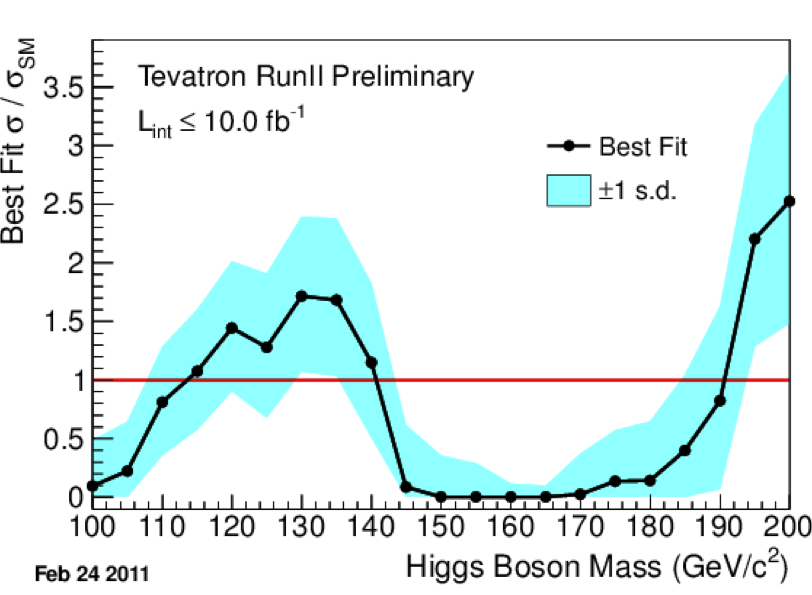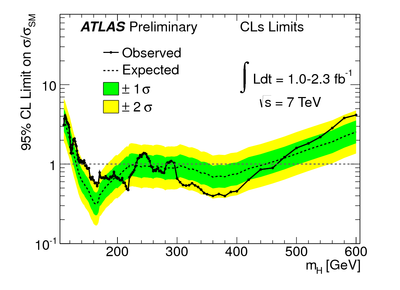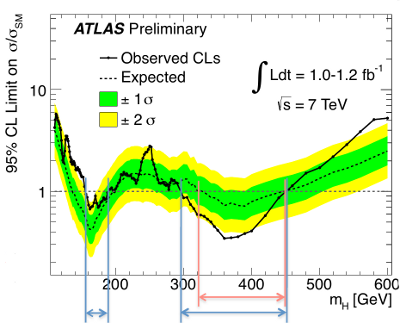This (Past) Week in Physics
Posted by David Zaslavsky on — Edited
There’s been a lot of big news from the experimental physics community over the past week or so, but unfortunately I’ve been busy with spring cleaning and making arrangements for a trip to DIS 2012 so I haven’t been able to keep on top of it. Funny how I have less free time when I’m on vacation…
Anyway, here’s a recap of some of the major recent events in the physics world:
Higgs boson search update
Tevatron combined Higgs signal
At the Moriond conference on electroweak physics, CDF and D0, the two major experiments from the (now closed) Tevatron, reported an excess of collision events between about \(\SI{115}{GeV}\) and \(\SI{140}{GeV}\), peaking at \(2.2\sigma\). This could be a very weak signal of the Higgs boson, but it wouldn’t have been much to get excited about if ATLAS and CMS hadn’t already detected similar (but stronger) signals in the same energy range.
It’s worth keeping in mind that the Tevatron has been shut down, so these latest results aren’t based on new data (like the LHC results); they’re based on a new analysis of the same …


